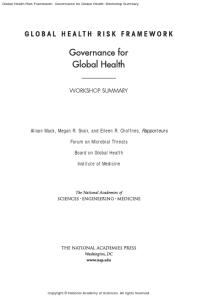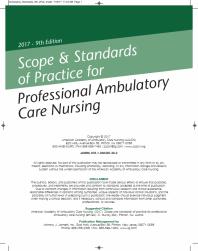Professional Governance for Nursing The Framework for Accountability Engagement and Excellence 1st Edition by Rachel E Start, Beverly J Hancock, Tim Porter O Grady ISBN 9781284286472 1284286479
$50.00 Original price was: $50.00.$25.00Current price is: $25.00.
Professional Governance for Nursing The Framework for Accountability Engagement and Excellence 1st Edition by Rachel E Start, Beverly J Hancock, Tim Porter O Grady – Ebook PDF Instant Download/Delivery: 9781284286472 ,1284286479
Full download Professional Governance for Nursing The Framework for Accountability Engagement and Excellence 1st Edition after payment

Product details:
ISBN 10: 1284286479
ISBN 13: 9781284286472
Author: Rachel E Start, Beverly J Hancock, Tim Porter O Grady
Professional Governance for Nursing The Framework for Accountability Engagement and Excellence 1st Edition Table of contents:
CHAPTER 1 Conceptual Foundations for Nursing Professional Governance: Professional Governance, Accountability, and Ownership of Nursing’s Social Contract
Introduction
Nursing Professional Identity
Professional Nursing Governance and the Journey to Equity and Value
Principles Underlying Professions
Professional Self-Governance
Professional Accountabilities
Practice
Professional Governance and Collective Bargaining
Translation of Professional Governance Principles into the Foundations of Nursing Practice
Trust
Accountability
Parity
Inclusivity and Structure
Conclusion
Chapter Questions
References
CHAPTER 2 Principles of Professional Governance in Organizations of Excellence
Introduction
Professional Governance Empowers Nurses
Principle #1: Professionals Are Knowledge Workers with a Realm of Practice Expertise and Authority
Principle #2: Professional Governance Is Decision Making Within the Realm of Knowledge Authority
Principle #3: Professionals Have Both Autonomy Within Their Practice and Control Over Their Practice
Principle #4: Accountability Is Owned by the Professional
Principle #5: Equitable Collateral Relationships Undergird Professional Governance
Principle #6: The Accountabilities of the Clinical Nurse Are Different from the Nurse Manager
Principle #7: Professional Governance Is Different From Participative Decision Making
Principle #8: Organizational Leaders Create an Environment for Professional Governance
Conclusion
Chapter Questions
References
CHAPTER 3 Nursing Leadership Behaviors as Foundational to Professional Governance
Introduction
Positional Versus Role Leadership
Model for Leadership Competencies
Leadership Behaviors, Knowledge, and Skills That Support Professional Accountability
Leadership to Establish Professional Governance Vision and Structures
Leadership Participation to Guide Success
Leadership Skills Needed to Effectively Navigate Governance Structures
Leaders to Disseminate Professional Governance Utility
Leaders to Sustain Professional Governance
Common Governance Leadership Challenges
Leadership Development
Council Chairs and Presidents
Impact of Leadership Development and Future Leadership Roles
Conclusion
Chapter Questions
References
CHAPTER 4 Professional Governance in a Healthcare System and the Role of the Chief Nurse Executive
Introduction
It Starts Here
Why Systems?
What Is a System?
Holding Company or Operating Company?
So How Does That Impact Professional Nurses?
Why Are Networks Important to a System?
Nurses Leading Life at the Intersection of Networks and Systems—CNE as Catalyst
Joining the Ranks of the Integrated
Back to Decision Making
Nurses as Advisers or Decision Makers?
Decision-Making Model
Conclusion
Chapter Questions
References
CHAPTER 5 The Role of the Clinical Care Nurse in Nursing Professional Governance
Introduction
Licensure and Responsibility to the Public That We Serve
A “New” Profession With Historical Hierarchy
Ownership
Oversight of Practice
Individual Nurses Engaging in Professional Organizations to Support Practice
Nursing Professional Governance and the Professional Nurse
Applying Evidence-Based Practice
Interprofessional Partners
The Magic of Making Change
Utilizing Resources
Practice Change Process
Accountability for Autonomous Evidence-Based Practice Through Outcome Measures
Conclusion
Chapter Questions
References
CHAPTER 6 The Role of the Nurse Manager in Professional Governance
Introduction
Culture and Professional Governance
The Manager’s Role in Professional Governance
Shift in Leadership Roles
Developing and Supporting the Council Chair
Role of the Nurse Manager in Council Meetings
Beyond the Meetings
Managers and Leaders as Advocates
Diplomacy Versus Activism
Advocacy’s Effect on Culture
Leading Change on the Unit
Encouraging Tests of Change
Sustaining Engagement and Empowering Change
Tools of Sustainability
Conclusion
Chapter Questions
References
CHAPTER 7 Peer Accountability and Relationships in a Professional Governance Structure
Introduction
Peer Review
Defining Terms
Alignment with Professional Governance Councils
Organizing Peer Review by Domains and Roles
Domains
Guidelines for Nurses in All Roles Organized by Domain
Peer Review for All Nurses
Individual Responsibilities
The Quality and Safety Domain
Incident-Based Peer Review
Organizational Level
Unit/Divisional Level
Prospective Peer Review
Nurse Leaders
Role Actualization Domain
Organizational Level
Unit/Division
Peer Competency Validation
Practice Advancement Domain
The Research or Practice/Evidence-Based Practice Council Provides Leadership for Practice Advancement
Conclusion
Chapter Questions
References
CHAPTER 8 The Functional Framework, Bylaws, and Structural Mandates for Nursing Professional Governance
Introduction
Self-Regulation of a Discipline
The Journey Continues
The Structure of Governance Builds Organization-Wide Autonomy and Accountability
A New Leadership Vision of the Future of Work
Successful Models of Partnership in Health Care
Equity-Based Models in Health Care
Nursing Self-Regulation
Role of the CNE/CNO
Next Step in the Journey
A Call to Action
Conclusion
Chapter Questions
References
CHAPTER 9 Application of Professional Governance Structures Across the Continuum
Introduction
Understanding the Operationalization of Structure in Professional Governance
Industry Trends in Nursing Professional Governance Structures
Assessing, Creating, Standing Up, and Sustaining Professional Governance Structures
Emory Healthcare
Background and Structure Creation and Assessment
Unit Practice Councils Roles and Voting
Professional Governance Structures That Mobilize Advanced Practice Nurses
Metrics That Show Progress and Impact
Ensuring Structure That Encompasses the Continuum as Well as the System
Considering Collateral Relationships and the Interprofessional Team in the Work of Professional Governance
Administrative Management Structures That Empower Professional Governance Principles
Rochester Regional Health Primary Care and Ambulatory Specialty Institute (RRH PCASI)
Background and Structure Creation and Assessment
Metrics That Show Progress and Impact
Considering Collateral Relationships and the Interprofessional Team in the Work of Professional Governance
Ensuring Structure That Encompasses the Continuum as Well as the System
Conclusion
Chapter Questions
References
CHAPTER 10 The Measurement of the Effectiveness of Nursing Professional Governance
Introduction
Basic Measurement Principles and Assessments
Reliability
Representativeness
Responsiveness
Professional Governance Instruments
The Index of Professional Nursing Governance
Reliability of the IPNG
Representativeness of the IPNG
Responsiveness of the IPNG
Summary of the Psychometric Properties of the IPNG
The Verran Professional Governance Scale
Representativeness of the VPGS
Reliability of the VPGS
Next Steps in Testing of the VPGS
Scale Selection
Conclusion
Chapter Questions
References
CHAPTER 11 Transforming Outcomes―The Impact of Professional Governance
Introduction
History of Healthcare Quality and Practice Oversight of Performance in Nursing
Tracking Impact Through Meaningful Quality Improvement Built on Reliable Correlations
Understanding Quality, Payment, and Accountability Structures in the U.S. Healthcare System
Professional Governance and Other Organizational Structures That Guide Quality and Performance Improvement
Fulfilling the Professional Mandate to Improve Outcomes: The Business Case for Professional Governance
Nursing Demographic Measurement as an Outcome
Patient Health Outcome Impact
Tactics to Track Progress and Impact
NSIs and Tracking Mechanisms: An Exemplar
Nurse Billing: The Future of Nurse Contribution Measurement
Care Coordination and Transition Care Management: Leveraging the Discipline-Specific Strength of Nursing in the Complex Management of Patients and Populations
Nurse-Led Care Coordination Teams
Nurse Care Coordination: An Exemplar of Autonomous Nursing Professional Governance
High-Risk Patient Populations
TCM
Screenings for SDoH Barriers and Increasing Health Equity
Impact on Health Equity and Access to Health Care: An Exemplar
Emerging Trends in Performance Improvement: Tools to Achieve Improved Nursing Practice
Conclusion
Chapter Questions
References
CHAPTER 12 Assuring Sustainability of Professional Governance
Introduction
Outcomes
Nursing Outcomes
Patient and Organizational Outcomes
Professional Practice Models
Alignment with Magnet® Recognition
Sustainable Structures
Structures of Governance
Structure and Language
New Language Leads to New Thinking and Acting
Laying the Foundations of Professional Practice With the Position Charter
Privileging for Practice
The End of Performance Evaluations
Clinical Advancement as a Replacement for Performance Evaluation
The Clinical Advancement Program and the Demonstration of Contribution
Role of the Nurse Manager in Sustaining Nursing Professional Governance
What Professional Workers Need from Managers
Collateral Leader Behaviors That Support Professional Practice
Conclusion
Chapter Questions
References
CHAPTER 13 Fostering Professionalism from the Academy to the Practice Setting
Introduction
Nursing Professional Governance: Academic/Practice Partnerships
Integration of Professional Development and Governance in the Academic Stage
Student Acclimation to Professional Governance and Community
AACN Competencies in Academic Curricula
Professionalizing the Emergent Leadership Role Within Nursing Professional Governance
Leadership Trajectory
Nursing Peer Review
The Novice Nurse
Peer Interviews
Onboarding and Transition to Practice Programs
Preceptors
Residencies, Internships, and Externships
Mentorship Programs
Leadership Measurement Tools
Outcome Measures
Patient Outcome Measures
Nurse Professional Development Measures
The CNO/Transformational Leader in Professional Governance
Mentoring for Positional Leadership Roles Within Professional Governance
Every Nurse to Be a Leader
Conclusion
Chapter Questions
References
CHAPTER 14 Value-Informed Nursing Practice and Leadership in Modern Health Care
Introduction
Implications of Value-Based Health Care for Nurses
The Ethical Imperative of Value-Informed Nursing
The Economic Value of Nursing
The Economic Value of Healthcare Delivery
Value-Informed Nursing
Value-Informed Nursing Practice
Value-Informed Nursing Leadership
Quantifying the Organizational Economic Value of Nursing
How to Make Value-Informed Nursing a Reality
Change in Professional Norms, Attitudes, and Behaviors
Value-Informed Nursing Education
Value-Informed Nursing Innovation
Conclusion
Chapter Questions
References
CHAPTER 15 Beyond the Organization―Governing Our Practice as a Profession in the Greater Nursing Community
Introduction
National Governance Through Professional Organizations
National Association of Indian Nurses of America: The Power of a Unified Voice and Focus
AAACN
Unchartered Territory: Defining the Role of the Ambulatory Nurse and Measuring Contribution
AAACN/CALNOC Collaboration
AONL: Defining Practice Competency
Nurse Executive Competencies
Nurse Manager Competencies
Professional Accountability
Tri-Council for Nursing: Addressing National Issues Through Professional Partnerships
Influence at the National Level
People also search for Professional Governance for Nursing The Framework for Accountability Engagement and Excellence 1st Edition:
what is the nursing oath of professional
professional bodies governing nursing practice
government professional nurse salary in south africa
professional nurse salary government
government professional nurse vacancies western cape
Tags: Rachel E Start, Beverly J Hancock, Tim Porter O Grady, Professional Governance, Accountability Engagement
You may also like…
Medicine - Medicine & Nursing Reference
The Doctor of Nursing Practice Project: A Framework for Success 4th Edition Katherine J. Moran
Uncategorized
Scope and Standards of Practice for Professional Ambulatory Care Nursing 9th Edition Cynthia Murray
Uncategorized
Education Studies & Teaching - Studying & Test Preparation
Uncategorized
Professional Nursing Concepts: Competencies for Quality Leadership 5th Edition Anita Finkelman
Business & Economics - Others











